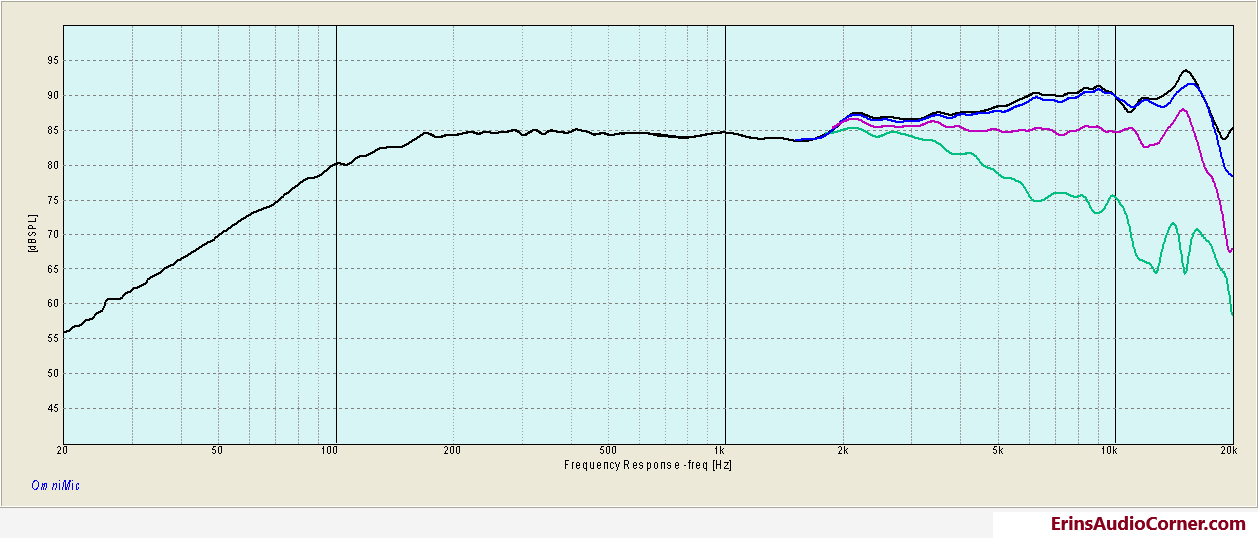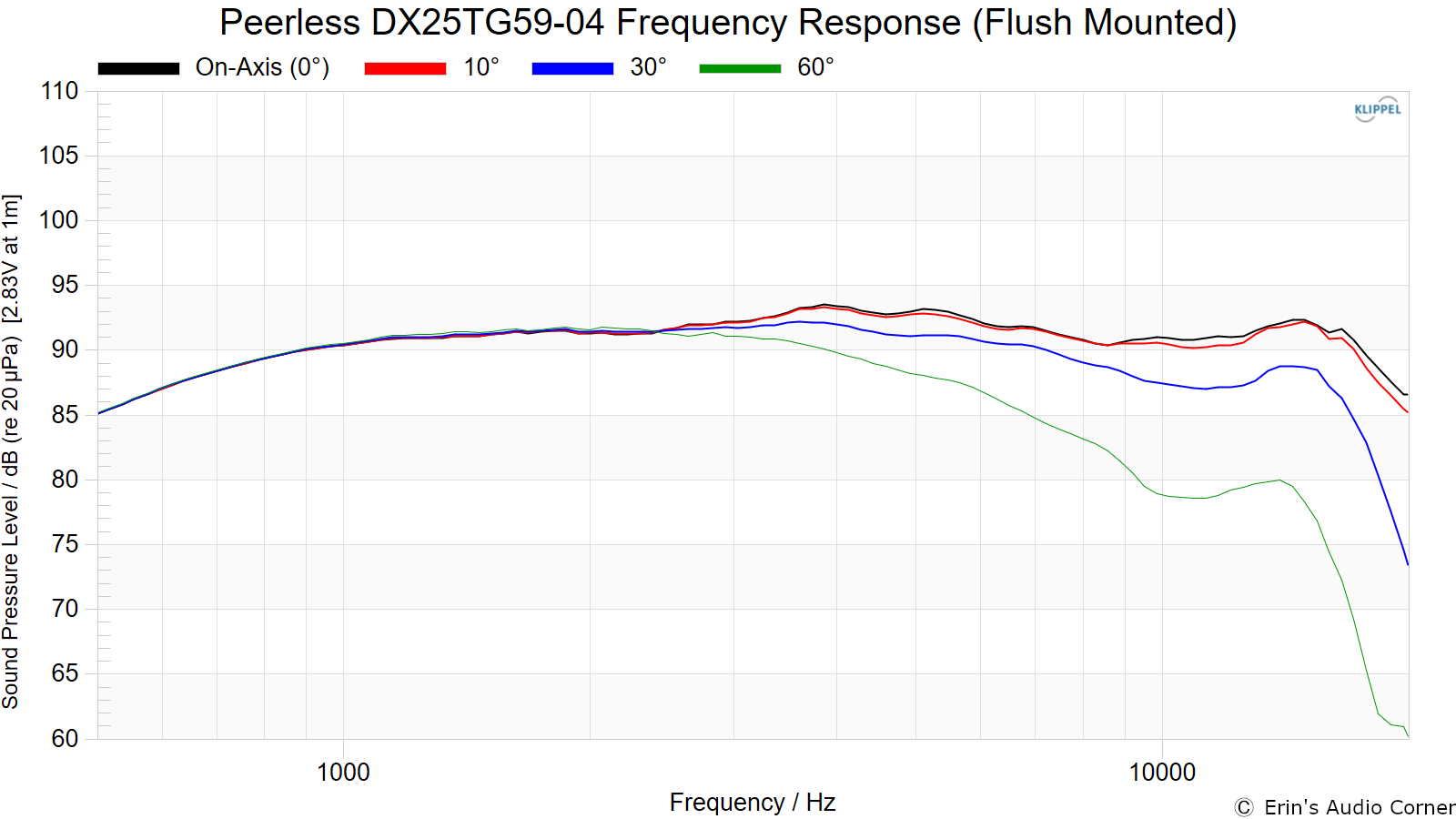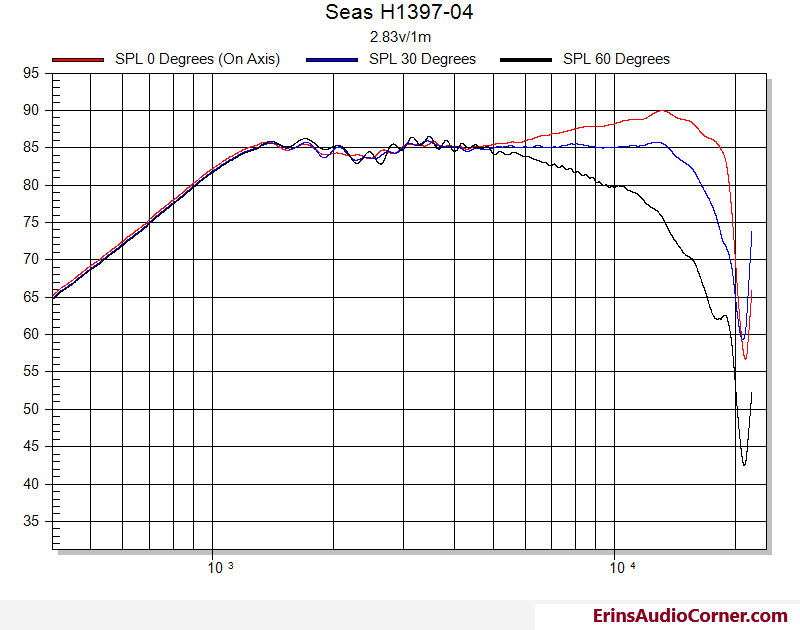Those who follow my posts would know I think there's some untapped potential for a speaker with woofer-assisted wideband driver (a.k.a FAST) as a design format. That's not helped by the rampant voodoo in the space. That's a shame as I think there's a niche for a well-engineered design with intelligent compromises if a modern widebander is used. Think Directiva but really old-school.
Thinking a 3-4" widebander mated to an 8+10" woofer with a 400-600Hz crossover.
Potential advantages:
- Better vertical lobing due to low XO point for the CtC
- Directivity control due to wide drivers + baffle without resorting to open baffle/slots ala Geithain or DD. Perhaps there is room to optimise CtC, driver diameters, baffle width and height for the smoothest directivity within this design format. The closest a wide baffle speaker, panels aside, came to mainstream acceptance were the Sonus Faber Elipsa and Devore Orangutan. And I suppose, the Linkwitz LXMini for a woofer-assisted widebander, or the XRK971 transient-perfect FAST for DIYA denizens.
- Less compression and more SPL than smaller monitors
- Not as loud as compression drivers but smoother
- More affordable, simpler construction, less to screw up in design and construction than typical large woofer direct radiating speakers with 3+ ways
- Less directivity mismatch than 8-10" 2-ways with a dome tweeter (looking at the Devore... the mismatch was painfully obvious to me)
Compromises
- Slightly less smoothness and HF extension than a dome tweeter, potentially rapidly narrowing directivity (extent of narrowing depending on the exact driver used)
- Potentially IMD in midrange and HD in HF
- Size/spouse approval factor
Broad design goals
- 3-4" widebander, 8-10" woofer
- 400-600Hz XO
- No preference for what box alignment, be it TL, reflex, aperiodic, sealed
- Explore the possibility of slightly waveguiding the widebander
- 35-16kHz +/- 1.5dB
- <1% THD 100Hz-16kHz at 100dBSPL
- Low baffle step frequency and smoothly increasing directivity on spinorama, established first with sims and then with anechoic/well-done gated/free-field/NFS measurements
- Broadly accessible drivers
The obvious candidate widebands I know of are the:
- Scanspeak 10F/8414G10
- Vifa TC9/TG9
- SEAS FU10RB
- SB Acoustics SB65 if using a woofer on the smaller side
- Mark Audio widebanders
I will pay for wideband + woofer drivers plus shipping, up to around $250, for a single prototype unit. I have nothing in it, just to spark discussion and collaboration in the community, and to bring much-needed ASR rigor to this design format and see what the results can be, as a member from a country where DIY speakers are prohibitive.
Thinking a 3-4" widebander mated to an 8+10" woofer with a 400-600Hz crossover.
Potential advantages:
- Better vertical lobing due to low XO point for the CtC
- Directivity control due to wide drivers + baffle without resorting to open baffle/slots ala Geithain or DD. Perhaps there is room to optimise CtC, driver diameters, baffle width and height for the smoothest directivity within this design format. The closest a wide baffle speaker, panels aside, came to mainstream acceptance were the Sonus Faber Elipsa and Devore Orangutan. And I suppose, the Linkwitz LXMini for a woofer-assisted widebander, or the XRK971 transient-perfect FAST for DIYA denizens.
- Less compression and more SPL than smaller monitors
- Not as loud as compression drivers but smoother
- More affordable, simpler construction, less to screw up in design and construction than typical large woofer direct radiating speakers with 3+ ways
- Less directivity mismatch than 8-10" 2-ways with a dome tweeter (looking at the Devore... the mismatch was painfully obvious to me)
Compromises
- Slightly less smoothness and HF extension than a dome tweeter, potentially rapidly narrowing directivity (extent of narrowing depending on the exact driver used)
- Potentially IMD in midrange and HD in HF
- Size/spouse approval factor
Broad design goals
- 3-4" widebander, 8-10" woofer
- 400-600Hz XO
- No preference for what box alignment, be it TL, reflex, aperiodic, sealed
- Explore the possibility of slightly waveguiding the widebander
- 35-16kHz +/- 1.5dB
- <1% THD 100Hz-16kHz at 100dBSPL
- Low baffle step frequency and smoothly increasing directivity on spinorama, established first with sims and then with anechoic/well-done gated/free-field/NFS measurements
- Broadly accessible drivers
The obvious candidate widebands I know of are the:
- Scanspeak 10F/8414G10
Scanspeak 10F/8414G10 Discovery 4 inch Fullrange
Scanspeak 10F/8414G10 Discovery 4 inch Fullrange
www.erinsaudiocorner.com
- Vifa TC9/TG9
- SEAS FU10RB
- SB Acoustics SB65 if using a woofer on the smaller side
- Mark Audio widebanders
I will pay for wideband + woofer drivers plus shipping, up to around $250, for a single prototype unit. I have nothing in it, just to spark discussion and collaboration in the community, and to bring much-needed ASR rigor to this design format and see what the results can be, as a member from a country where DIY speakers are prohibitive.



